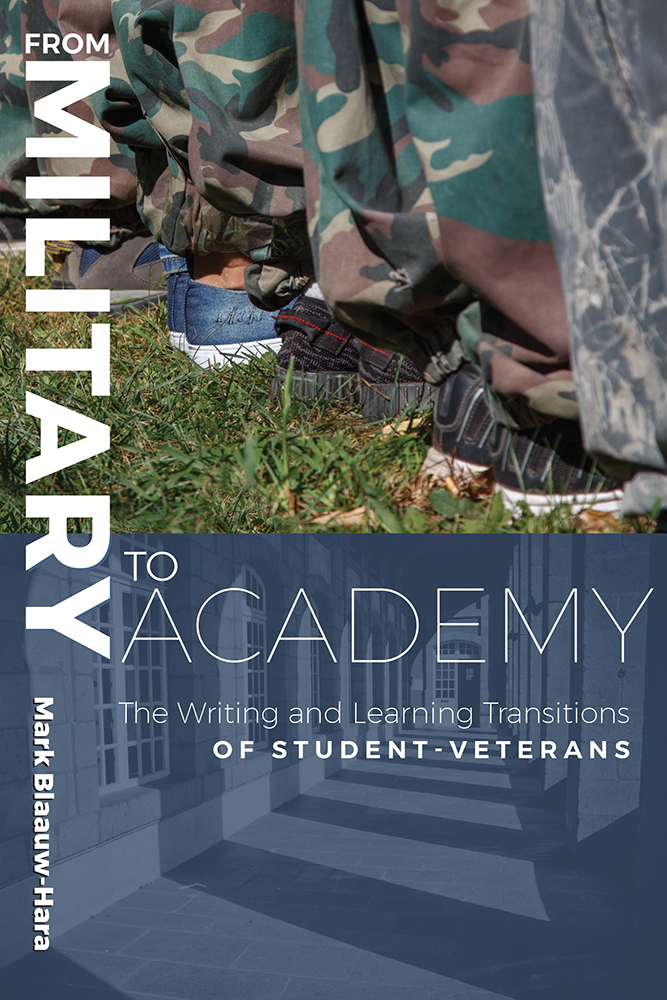
From Military to Academy
The Writing and Learning Transitions of Student-Veterans
Mark Blaauw-Hara
U TAH S TATE U NIVERSITY P RESS
Logan
2021 by University Press of Colorado
Published by Utah State University Press
An imprint of University Press of Colorado
245 Century Circle, Suite 202
Louisville, Colorado 80027
All rights reserved
 The University Press of Colorado is a proud member of the Association of UniversityPresses.
The University Press of Colorado is a proud member of the Association of UniversityPresses.
The University Press of Colorado is a cooperative publishing enterprise supported, in part, by Adams State University, Colorado State University, Fort Lewis College, Metropolitan State University of Denver, Regis University, University of Colorado, University of Northern Colorado, University of Wyoming, Utah State University, and Western Colorado University.
ISBN: 978-1-64642-133-6 (paperback)
ISBN: 978-1-64642-134-3 (ebook)
https://doi.org/10.7330/9781646421343
Library of Congress Cataloging-in-Publication Data
Names: Blaauw-Hara, Mark, author.
Title: From military to academy : the writing and learning transitions of student-veterans / by Mark Blaauw-Hara.
Description: Logan : Utah State University Press, [2021] | Includes bibliographical references and index.
Identifiers: LCCN 2021021091 (print) | LCCN 2021021092 (ebook) | ISBN 9781646421336 (paperback) | ISBN 9781646421343 (ebook)
Subjects: LCSH: VeteransEducation (Higher)United States. | College-student veteransUnited States. | English languageRhetoricStudy and teaching (Higher) | Academic writingStudy and teaching (Higher)
Classification: LCC UB357 .B525 2021 (print) | LCC UB357 (ebook) | DDC 378.1/9826970973dc23
LC record available at https://lccn.loc.gov/2021021091
LC ebook record available at https://lccn.loc.gov/2021021092
The University Press of Colorado gratefully acknowledges the support of North Central Michigan College toward the publication of this book.
Cover photographs: Pankratov Yuriy/Shutterstock (top), matabum/Shutterstock (bottom)
Contents
Thank you to the service members, veterans, and students who were willing to help me with this research. I literally could not have done it without you. Thank you for your service and sacrifice. I hope that this book helps to support the educational journeys of your fellow service members and student-veterans.
Thanks as well to my many academic mentors who taught me how to research, write, and think. I want to specifically note Louise Wetherbee Phelps, Kevin DePew, Michelle Navarre Cleary, and Julia Romberger, who helped me so much with the early stages of this project. Cheri Lemieux Spiegel provided an unending well of moral support. Thanks also to the vibrant community of researchers who are delving into student-veterans writing trajectoriesI relied on your work quite a bit as I developed this book. I am very grateful to North Central Michigan College for providing me sabbatical time to work on thismanuscript.
An early version of appeared in the Community College Journal of Research and Practice. Both benefited from the careful reading and response of the editors and anonymous reviewers. And thank you so much to Rachael at Utah State University Press and the anonymous reviewers who read my drafts with care and provided excellent suggestions forrevision.
Finally, thank you to my brilliant wife, Jami, to my sons, Joad and Harper, and to my parents and in-laws for supportingme.
Higher education is experiencing an almost unprecedented influx of student-veterans. A report from the US Department of Education found that in 20072008, about 657,000 veterans and 215,000 reservists or active-duty service members were undergraduates (Radford 2011). By 2013, these numbers had increased to over 1 million student-veterans; 73 percent of these students were male, and many had families (US Department of Veterans Affairs 2014). Additionally, 62 percent of them were first-generation college students, and only 15 percent were of what are thought of as traditional college ages (US Department of Veterans Affairs 2014). By 2020, over 5 million post-9/11 service members had transitioned out of the military (American Council on Education 2015), many of whom will likely use their GI Bill benefits to go to college. A 2012 American Council on Education report stated that institutions have not faced such a significant influx of veteran students on campus since World War II (McBain et al. 2012, 5).
In many ways, student-veterans are ideal college students. I have taught writing at a small community college with a significant student-veteran population for around twenty years, and I have found that veterans often possess strong organizational skills and a developed work ethic, among other traits. Their attendance is frequently exemplary, and they reliably do their homework. My anecdotal observations are supported by scholarship; for example, Stone (2017) notes that military members acquired time management skills, confidence in themselves during challenging circumstances, cognitive flexibility when solving problems or evaluating information, and openness to diversity (382). Other researchers have pointed out that student-veterans have been trained to be leaders and mutually reliant team members (Morrow and Hart 2014). They also tend to have grit, a term popularized by Angela Duckworth to describe having resilience in the face of failure [and] having deep commitments that you remain loyal to over many years (qtd. in Perkins-Gough 2013, 15). In fact, one of the first studies Duckworth and her colleagues performed established that the grittier West Point cadets were, the more likely they were to finish their training. I have seen that same strong work ethic and ability to persevere in the face of difficult challenges carry student-veterans through draft after draft ofpapers.
Additionally, many student-veterans have a more developed and nuanced worldview than most traditional students, a result of working with diverse people in the military and experiencing different cultures around the world, and they can bring this experience to bear in class discussions and papers (Morrow and Hart 2014; Schell and Kleinbart 2014; Stone 2017). In a commentary in the Chronicle of Higher Education, Mark Street (2014) describes the enriched perspectives veterans have brought to his visual arts classes, noting that they provide a valuable counterpoint to the views of more traditional students. He writes, Yes, lets do all we can to make the transition from military service to college classroom easier for the nations recent veterans. But lets also remember that were not doing it only for them, were doing it for us (para. 10). The American Council on Education (2011) report Promising Practices in Veterans Education found that student-veterans defined success more broadly than many traditional students, including not only GPA, but also social success and engagement with faculty and their peersa welcome finding to faculty who strive semester after semester to get students to think beyondgrades.
Despite these strengths, veterans frequently find the transition to college difficult. In a Chronicle cover story, Libby Sander (2012) writes that military programs designed to help veterans transition to civilian life focus more on how to access healthcare and get a job than they do on choosing a college and getting educational benefits. Additionally, colleges frequently have systems that are disorienting for veterans. Rumann, Rivera, and Hernandez (2011) report that student-veterans are often sent from office to office when attempting to gather information related to GI Bill funding (55), and that college staff differ greatly in their knowledge about veterans benefits. From Soldier to Student II found great diversity in how institutions serve veterans, the variety of services and programs offered, and where services and programs are housed within the administrative infrastructure (McBain et al. 2012, 8). Advising and faculty training to work with veterans tends to vary widely (Persky and Oliver 2010; Wheeler 2012), and frequently training programs for how to address veteran-specific issues are inadequate (McBain et al. 2012). Veterans are post-traditional students, and many college orientation programs are designed with more traditional students in mind. As Holly Wheeler (2012) writes, After having served in the military, likely in overseas combat, veterans do not need to be shown around campus or to spend an entire day meeting 18-year-old classmates (790). Wheeler suggests that colleges develop specialized orientations for veterans that are designed to help them navigate financial aid, meet other student-veterans, and introduce them to college resources. Currently, however, few colleges provide such orientations. In a meta-analysis of over sixty publications centering on student-veterans and college, Evans, Pellegrino, and Hoggan (2015) were able to find no overarching frameworks to help administrators make decisions about appropriate support structures they can design for veterans. Even more surprising was the lack of empirical studies pertaining to the efficacy of existing institutional supports (57).
Next page

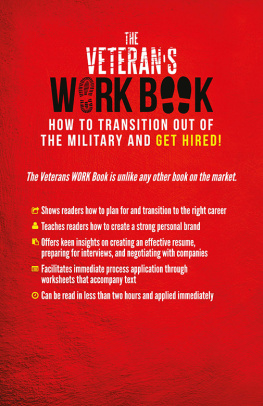

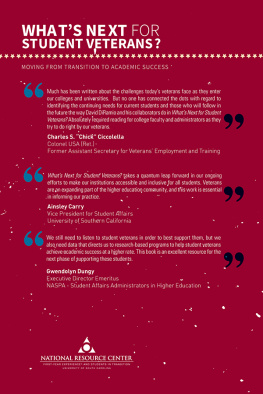
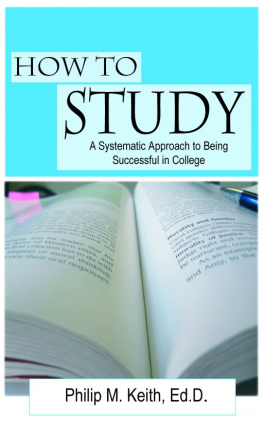

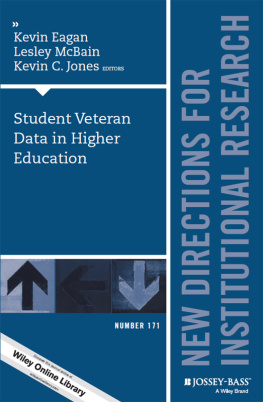
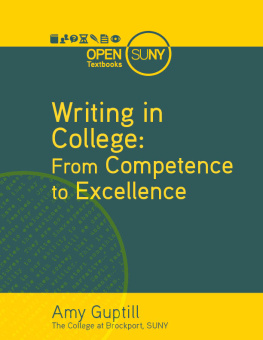
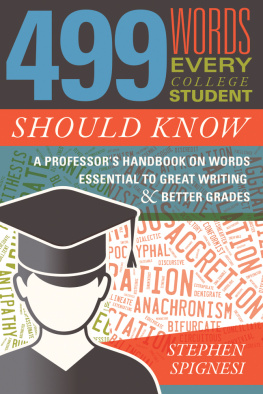
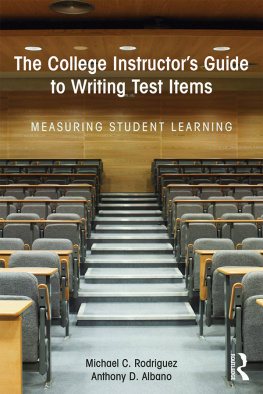

 The University Press of Colorado is a proud member of the Association of UniversityPresses.
The University Press of Colorado is a proud member of the Association of UniversityPresses.